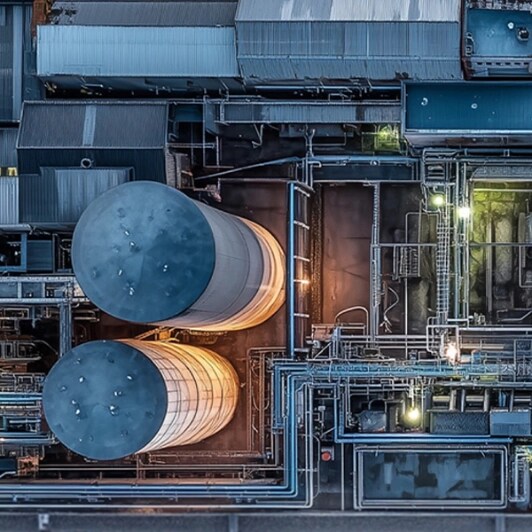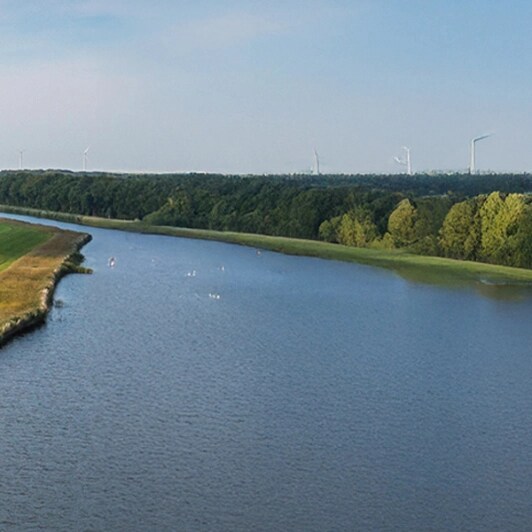Published: Oct 29, 2025
Operational efficiency: From reactive maintenance to predictive resilience
Part 4 – Water intelligence: An NCS whitepaper
While customer-facing innovation often captures the spotlight, the greatest opportunities for transformation in the water industry lie deeper within the operational backbone: the networks, assets, and supply chains that keep services running. For Australian water utilities, climate change, urban growth, and ageing infrastructure are putting unprecedented pressure on these systems. At the same time, regulatory and budgetary constraints are tightening, requiring utilities to achieve more with less.
Digital transformation offers a way forward, as Steve Avery, and Stuart Clift, two experienced Account Managers working with the Energy, Utilities and Resources industry, share.
By leveraging real-time data, advanced analytics, and automation, utilities are shifting from reactive, labour-intensive approaches to proactive, predictive, and increasingly autonomous modes of operation. This shift is not only about cost reduction; it is about building resilient, adaptable organisations capable of delivering safe, sustainable services in the face of uncertainty.
Digital twins provide valuable analysis for water utility managers and insights for optimising infrastructure operations and planning for long-term impacts. This can provide water utilities with the capability to explore and visualise emerging consumption patterns and their effects on the functioning of water systems and can provide predictive analytics for asset maintenance.
Reactive maintenance vs predictive resilience
Traditional maintenance approaches – whether based on fixed schedules or emergency repairs – are inefficient and often costly. Fixed schedules can lead to unnecessary interventions, while reactive maintenance exposes utilities to service disruptions, higher costs, and safety risks.
Predictive resilience, enabled by sensors, IoT devices, and AI-driven analytics, allows utilities to monitor asset conditions in real time and forecast when intervention is required. By detecting anomalies early, operators can intervene before failures occur, reducing unplanned downtime and extending asset life. The benefits extend well beyond reliability. Predictive approaches cut operational expenditure, reduce after-hours callouts, and improve workforce safety by lowering the need for urgent field interventions.
North East Water provides a clear example. By deploying a hybrid digital twin that integrates SCADA and IoT data into a predictive maintenance platform, the utility reduced after-hours pump inspections and repairs by around 16 per pump per year. Machine learning models now flag pump anomalies before they escalate, empowering frontline staff with real-time insights and reducing both costs and disruption.
Network optimisation and real-time visibility
Water networks are complex, dynamic systems, yet many utilities operate with limited real-time visibility into performance. As demand patterns shift and environmental conditions fluctuate, this lack of transparency leads to inefficiencies and risks.
Digital twins and real-time telemetry are addressing this challenge by enabling dynamic simulation of network behaviour. Utilities can now optimise pressure management to reduce leakage and pipe bursts, improve pumping efficiency to lower energy costs, and monitor water quality across the network.
Melbourne Water has demonstrated the power of this approach through a cloud-based digital twin that simulates its recycled water production process. NCS helped Melbourne Water to integrate data from multiple platforms and using predictive AI models helped to anticipate factors that could affect the production of recycled water. Integrated with predictive AI models, the platform forecasts turbidity issues with 80% accuracy up to three days in advance. This capability not only allows for proactive operational adjustments but also provides customers with early warnings about service impacts, strengthening trust and transparency.
Smarter lifecycle planning
Managing the lifecycle of capital-intensive infrastructure is one of the water sector’s most strategic challenges. Traditionally, renewal or refurbishment decisions have been made on the basis of asset age, often leading to premature investments or costly delays.
Data-driven lifecycle planning changes this dynamic. By consolidating performance metrics, condition assessments, and risk profiles into integrated models, utilities can prioritise investments based on criticality and remaining useful life. This ensures that scarce capital is deployed where it delivers the greatest impact.
Such approaches also strengthen accountability. With regulators and communities demanding greater transparency, digital lifecycle models provide robust evidence for investment decisions, enabling utilities to demonstrate how they are balancing cost, risk, and service outcomes.








